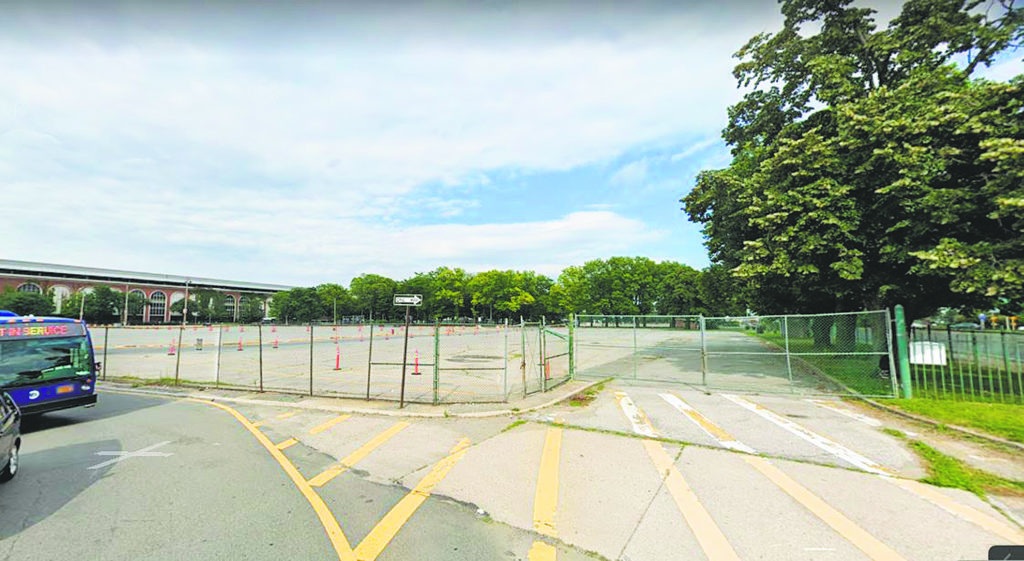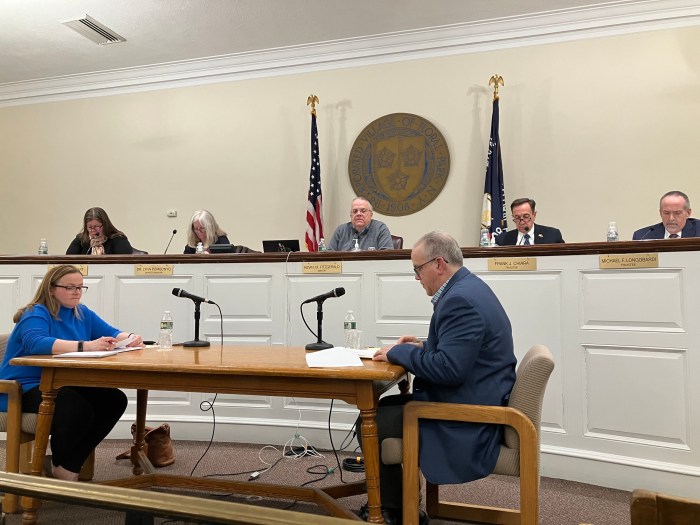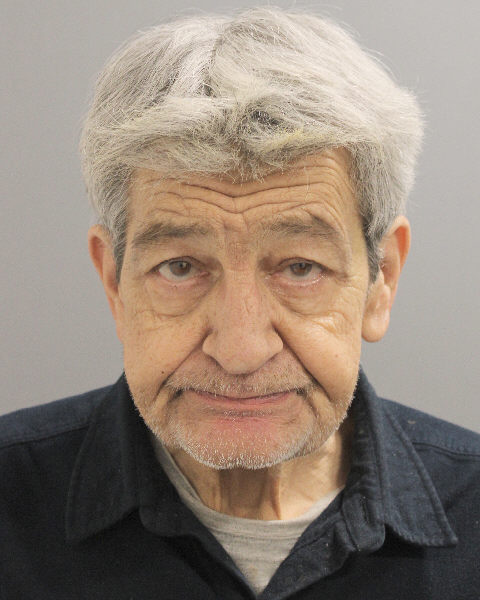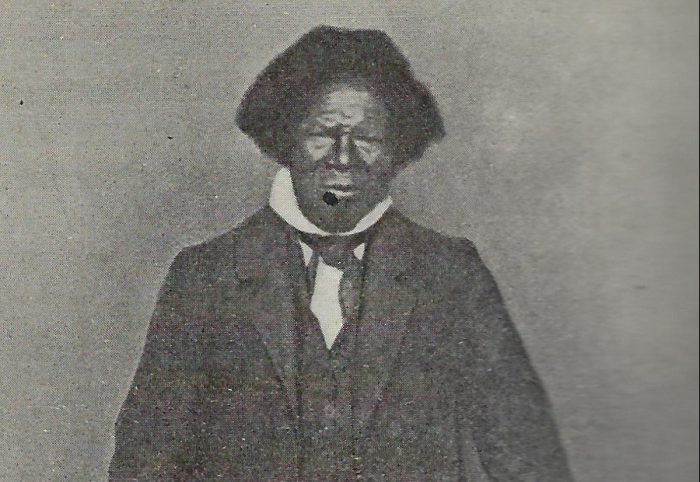 At last week’s village board meeting, deputy mayor Kevin Fitzgerald gave an update about where the Village of Floral Park stands in its ongoing litigation against the Empire State Development (ESD), Franchise Oversight Board (FOB) and New York Arena Partners (NYAP) who are behind the Belmont Arena project.
At last week’s village board meeting, deputy mayor Kevin Fitzgerald gave an update about where the Village of Floral Park stands in its ongoing litigation against the Empire State Development (ESD), Franchise Oversight Board (FOB) and New York Arena Partners (NYAP) who are behind the Belmont Arena project.
On Jan. 10, three days after the filing deadline for submissions in the village’s litigation against ESD, FOB and NYAP regarding the Belmont Arena project, ESD produced documents in response to the village’s counsel’s Freedom of Information Law (FOIL) requests. The documents were produced five months after the village’s most recent FOIL request in August of last year.
“The documents just produced should have been produced in response to the village’s October 2018 FOIL request during the environmental review process, but they were not,” Fitzgerald said. “It is also telling that immediately after these documents were released ESD attempted to retract the release of these documents, despite the lack of any legal basis to withhold these documents from public disclosure. Moreover, while ESD finally produced a handful of responsive documents, it withheld an unknown number of others. Meanwhile, the same August 2019 FOIL request was filed with the FOB, and has failed to provide any substantive response at all over the past five months, indicating that both agencies have been trying to evade transparency and looking to run the clock on the pending litigation.”
Jack Sterne, who is a spokesman for the ESD, said this is nothing more than an attempt to kill a project that will provide great economic success to the area.
“This is nothing more than a Hail Mary attempt by the Village of Floral Park to kill a project that is creating thousands of jobs and generating billions of dollars in economic activity,” Sterne said. “As we’ve said before, development efforts at this site were languishing with no viable proposals on the table and the 2017 RFP was designed to attract the best possible range of proposals to redevelop this site. The winning proposal was selected because it scored the highest on the clear, straightforward criteria outlined in our process. This other document from NYRA is old news and immaterial.”
 In the village’s view, the documents belatedly turned over by ESD further supported the village’s contention that the entire process—from well before the commencement of the Request for Proposal (RFP) process and continuing through the environmental review process conducted by ESD—was merely a show to hide a predetermined outcome. The village feels that the redevelopment was conceived in secret, and was pushed through to approval without adequate regard to the projects’ impact on surrounding communities including Floral Park.
In the village’s view, the documents belatedly turned over by ESD further supported the village’s contention that the entire process—from well before the commencement of the Request for Proposal (RFP) process and continuing through the environmental review process conducted by ESD—was merely a show to hide a predetermined outcome. The village feels that the redevelopment was conceived in secret, and was pushed through to approval without adequate regard to the projects’ impact on surrounding communities including Floral Park.
The village’s counsel, Beveridge & Diamond, submitted a request to Judge Roy Mahon on Friday Jan. 17, requesting that the submitted documents should also be considered by the court. On Sept. 9, the village commenced an Article 78 proceeding in the Supreme Court of the State New York, Nassau County, seeking judicial review of the project approval by ESD.
“Some of the documents from ESD reveal that senior members of ESD including its chairman and its vice president of Planning and Environmental Review and other senior state officials were in receipt of a secret ‘master plan’ for the redevelopment of Belmont in 2016,” Fitzgerald said. “The communications further reveal that multiple meetings with ESD and FOB were scheduled to occur. It is important to note that in 2016 there was already an open RFP for the site. That RFP was abruptly cancelled and a new RFP was issued six months later. In hindsight, now that we have this additional information, it is extremely difficult not to conclude that the new RFP was designed specifically for this project that was already known to various senior members of ESD, including the individual at ESD responsible for ensuring compliance with State Environmental Quality Review Act (SEQRA). In light of these documents, which ESD was so reluctant to release, it is extremely difficult to accept ESD’s assertion that the process by which the project was selected was open and competitive, as required by state law.”
The village also found it troubling that the ESD designated itself as the lead agency to conduct and decide the adequacy of the environmental review for the Belmont Arena project under SEQRA.
“It is nearly impossible to accept that ESD undertook this crucial role in an objective and unbiased manner when it has sought to hide the fact that it apparently played a critical role in the development of this specific project,” Fitzgerald continued. “Are the residents of the communities that are to be impacted by this project supposed to be confident that the residents’ near unanimous request that this project needed to significantly scale back in size and scope to reduce the project’s impacts was properly considered by ESD?”
Fitzgerald said that he thinks all residents of Floral Park, the surrounding communities and the entire state should be extremely disappointed in how the entire process has unfolded and continues to unfold.
“In the past, the village and its residents have always brought forth reasonable questions in the interest of ensuring that our community is not significantly impacted in a negative manner,” he said. “The village and its residents never said they were against development at Belmont Park. All we asked for, and quite frankly have a legal right to, was to have meaningful input in the process from the beginning. It is now even clearer based on the aforementioned partial discovery that it appears that it never was the intent of the ESD as lead agency to have meaningful conversations and take those concerns from those meetings into serious consideration. The meetings and entire SERQA process that were held were just a ‘check the box exercise’ as the project apparently was deemed to be approved since 2016.”































